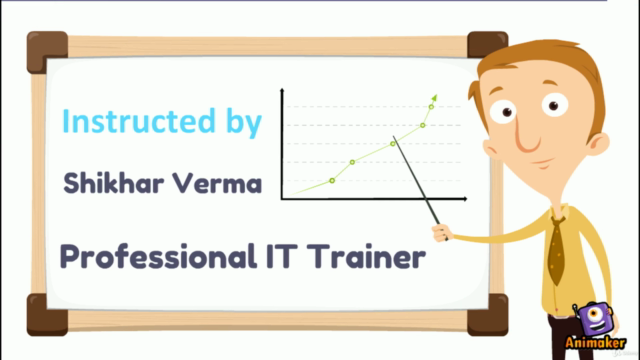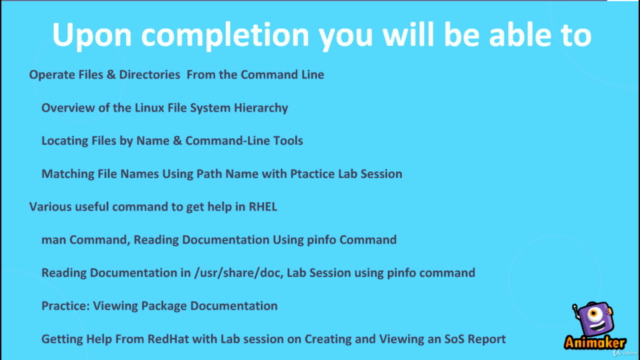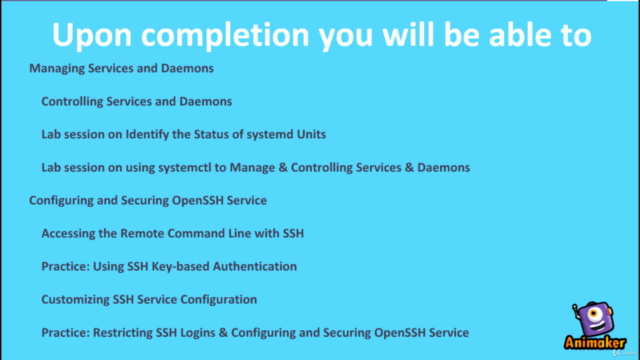Linux Certified System Admin - SA1 (RHEL7)

Why take this course?
Based on the outline you've provided, it looks like you're preparing for a comprehensive Linux command line and system administration training. This training covers a wide range of topics that are essential for anyone looking to gain proficiency in managing Linux systems. Here's a brief explanation of each section, along with some additional context:
-
File Security from the Command Line: This includes understanding file permissions, setting default permissions for new files, and using special permissions like setuid, setgid, and sticky bits. You'll learn how to change ownership and permissions of files securely.
-
Linux Processes: This involves managing running processes, starting and stopping jobs, and understanding how to monitor process activity. You'll learn about the init system and systemd for controlling services and daemons.
-
Managing Services and Daemons: You'll understand how to start, stop, and manage services using tools like
systemctlandservice. This is crucial for ensuring that the necessary services are running on the system and for troubleshooting any issues with those services. -
Configuring and Securing SSH Service: Secure Shell (SSH) is a critical service for remote administration. You'll learn how to set it up securely using key-based authentication and restrict logins as needed.
-
Analyzing Logs: This involves understanding system logging, configuring log files, and using tools like
journalctlto analyze system events. It's essential for diagnosing and resolving issues and for maintaining the security of the system. -
Managing Linux Enterprise Networking: You'll learn how to configure network settings, validate network configurations, and use
nmcliand other tools to manage network connections. This includes setting up static IP addresses, configuring DNS, and handling hostnames. -
Archiving and Copying Files Between Systems: This covers using compressed archive files (tar), securely copying files over the network (scp), and synchronizing files between systems (rsync). These skills are important for backing up data, sharing files, and maintaining system integrity across multiple servers.
-
Installing and Updating Software Packages: You'll learn how to manage software updates and install new packages using yum or dnf, which are package managers in Red Hat-based systems. Enabling the correct repositories is also covered to ensure you can access the latest and most secure software.
-
Linux File Systems: This includes identifying active file systems and devices, mounting and unmounting file systems, creating hard and soft links, and locating files on the system. Understanding how Linux handles file systems is key to effectively managing and organizing data on a system.
Each of these topics is critical for a Linux system administrator or anyone looking to deepen their understanding of Linux from the command line. The lab sessions are particularly important as they provide hands-on experience, which is invaluable for learning and mastering these skills.
Course Gallery




Loading charts...